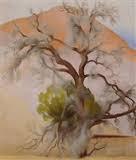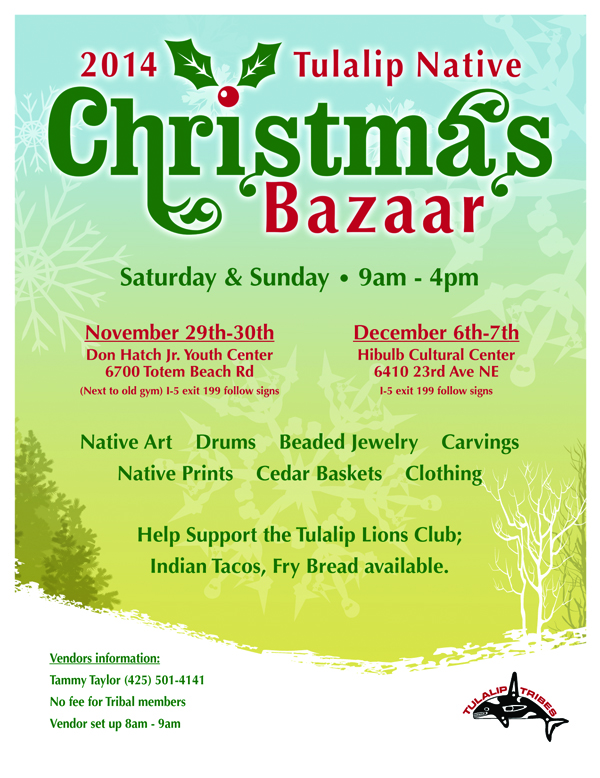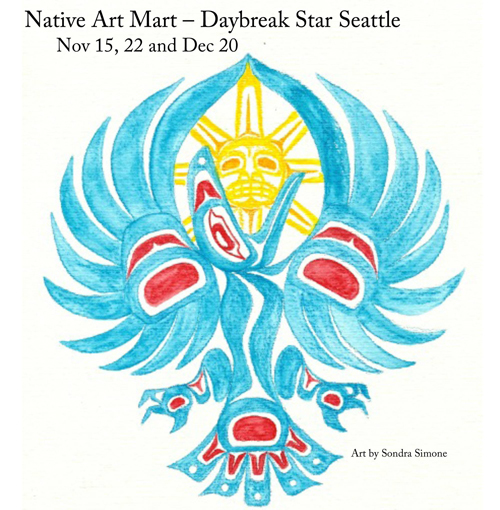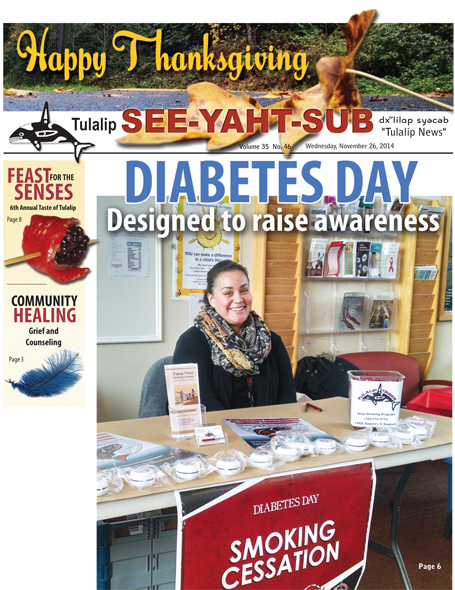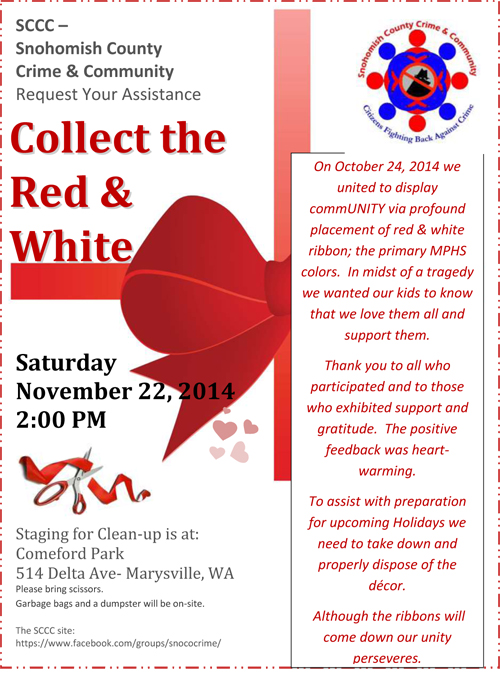Hundreds of American Indians Rally Against Washington NFL Team
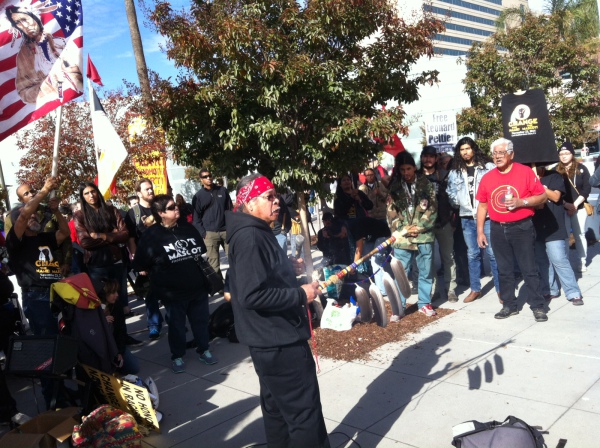
By Blu Wakpa, Native News Online , November 24, 2014
OCCUPIED TAMIEN OHLONE TERRITORY (Santa Clara, California) – After successful demonstrations in O’odham (Glendale, Arizona) and Dakota (Twin Cities, Minnesota), four-hundred Indigenous Peoples and their allies poured into Tamien in solidarity with a national grassroots campaign to change the name and mascot of the Washington NFL team. Traveling by carpool, Bay Area Rapid Transit (BART), and out-of-state flights, many amplified a growing voice for decolonization in sports.
The demonstration began at 8 a.m. with a prayer at one of many desecrated sacred sites (shell mounds and burial grounds) maintaining its indigenous Ohlone place name, Ulistac. According to Corrina Gould, a Karkin and Chochenyo Ohlone, Uli is the name of an Ohlone warrior who inhabited the area and stac refers to place/land. The prayer to the land and ancestors was followed by a march to Levi’s Stadium held prior to the game between San Francisco and Washington.
The peaceful event included a two-hour series of passionate and informed speeches from local, regional, and national activists, including people Indigenous to the area and upcoming leaders like Jacqueline Keeler of Eradicating Offensive Native Mascotry (EONM) and Dahkota Brown a 16-year-old Wilton Miwok student and founder of Native Education Raising Dedicated Students (NERDS). Elders who’ve inspired future generations also spoke on the topic, including Charlene Teeters and Clyde Bellecourt of the National Coalition on Racism in Sports and the Media (NCRSM).
Asian, African, and European people also educated fans by engaging, chanting, and holding picket signs and banners. Tribal African music blessed the event and recognized the similar histories between the African and Indigenous diaspora. Mexica (Aztec) dancers joined together in prayer, symbolizing the remembrance of the so-called Latino/Hispanic’s Indigeneity and pan-Indigenous interests across the colonial US-MX border.

Radio and television ads criticizing the nickname were aired throughout Ohlone and Miwok territories leading up to the game. Many broadcasters became allies when they chose not to mention Washington’s mascot. Audiences must understand the scalps of Indigenous Peoples were captured to collect bounties from the United States and expand White Supremacy outside of Europe.
Although Washington’s team owner, Dan Snyder, has vowed to “never change the name” and the NFL commissioner, Roger Goodell said earlier this year the nickname has been “presented in a way that honors Native Americans,” the demonstrations outside Levi’s Stadium and nationwide indicate Indigenous decolonization and self-determination is inevitable.
As fans passed the demonstration, many were quite surprised. “I’ve been a Washington fan for a long time and I’ve seen more resistance the last few years,” says Brian Jones, 35. He continued, “This demonstration helps me understand the mascot impacts actual people. It made me think about the other side of this issue.” John, 29, agreed saying, “When I see actual Native American’s are offended—I have to respect that.”
A die-hard Washington fan, Robert Magnini, 60, said, “I’ve been a fan since I was a kid. I think the name is offense and we need to change the name as soon as possible.”
Not all Indigenous Peoples agree, including Joseph Rey Potter, 14, who passed the demonstration wearing a Washington jersey and a Pomo baseball hat. “My Dad was a fan, so I just stayed with it. I understand it’s racist, but I’m just a fan of the game.” Potter concluded, “If they changed their name, I’d be a bigger fan.”
Kris Longoria and Antonio Gonzales, co-chairs of the Bay Area Coalition Against Racism in Sports and Media, said they will continue to escalate pressure on the NFL football team and build more partnerships with local organizations and government institutions.
Many urgent struggles exist across the Western Hemisphere and we must all do our part to challenge colonialism and honor Indigenous nations, leadership, and goals.
“PEOPLE SEE THIS ISSUE IS WINNABLE, ATTAINABLE, AND THEY BECOME EMPOWERED TO MOVE ONTO THE BIGGER ISSUES,” COMMENTED ANTONIO GONZALES.
A grandmother and her granddaughter appeared severely wounded, covered in bloody hair and hair buns held together with knives. “Redskin means someone whose been scalped, so me and my grandma put fake blood all over to show what a redskin means,” said Calissa Gali, 11. “None of my friends know what redskin means. They should learn at school, but some of the teachers don’t want to talk about it.”
Sacred Sites Protection & Rights of Indigenous Tribes (SSPRIT) has transferred the pain of another desecrated Ohlone Shell Mound in Karkin by decolonizing Vallejo High School’s Apaches and Solano Middle School’s Chieftains this year. The connections between appropriated sacred sites and stereotypes in sports are undeniable.
SSPRIT are now contractors, collaborating with students and administrators to educate about Indigenous mascots at school assemblies. Teacher training was also included in the negotiations to foster an integrated ethnic studies program across the school district. A duplication of this attainable model is also occurring with the Carquinez Coalition to Change the Mascot (CCCM) for John Swett High School Indians in Karkin (Crocket, CA).
Changing Washington’s name and mascot is not the end of changes to come. Colonization was several lifetimes of trauma and decolonization will take several lifetimes of healing. We envision post-colonialism. We’re not your mascot anymore.
Bay Area Coalition Against Racism in Sports is sponsored by American Indian Movement-West, Bay Area American Indian Two-Spirits, Eradicating Offensive Native Mascotry, Indian People Organizing for Change, Sacred Sites Protection & Rights of Indigenous Tribes, ANSWER Coalition, Idle No More SF Bay, and National Lawyers Guild San Francisco Bay Area Chapter. National ‘Change the Mascot’ supporters can be found at: http://www.changethemascot.org/supporters-of-change/
#NotYourMascot #ChangeTheName #ChangeTheMascot #NoHonorInRacism
Native News Online Photos by Arthur Jacobs
Art Of The American West Comes To The Tacoma Art Museum
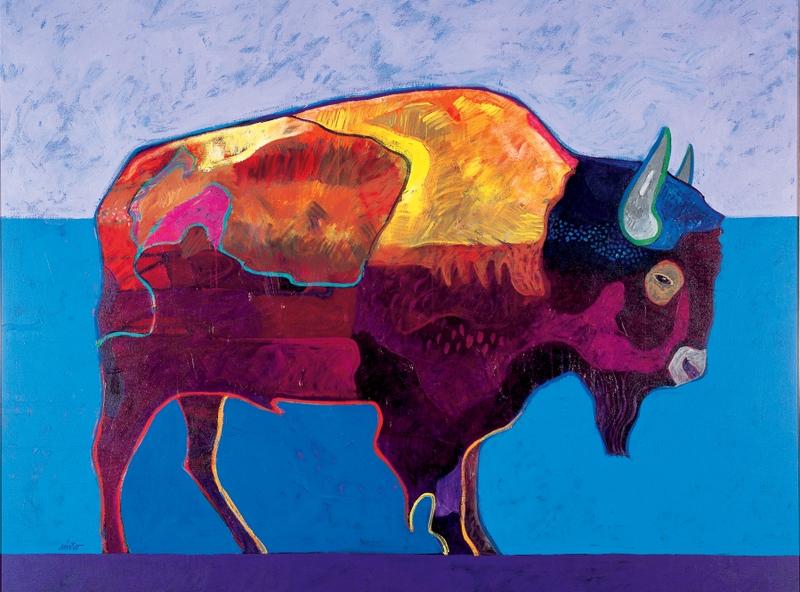
TACOMA ART MUSEUM, HAUB FAMILY COLLECTION
By Jennifer Wing, KPLU
Images of the American West line the walls of a brand new addition to the Tacoma Art Museum. The collection, a gift from a German family with ties to the Northwest, is a once-in-a-lifetime acquisition that is raising the museum’s profile.
The transformation of the Tacoma Art Museum over the last two years began with a phone call between the museum’s director and the lawyer for Erivan and Helga Haub. The museum was looking for a donation to help with the redesign of its lobby. But Laura Fry with the museum says the Haubs, through their lawyer, made an incredible and unexpected offer.
“He said, ‘Well, would you be interested in their collection of Western American art?’” Fry said.
That conversation resulted in the new 16,000-square foot addition designed by Tom Kundig. It houses four galleries that contain what is now one of the top collections of Western American art in the world. The collection boasts 295 paintings and bronze sculptures, 130 are currently on view. The Haubs also gave money for the construction of the new wing and set up endowments for 10 new positions, including Fry’s, who is the collection’s curator.
“This is the biggest donation of artwork in the Tacoma Art Museum’s History,” said Fry. “In 79 years of operating, this is our single biggest gift. So this really does transform the institution.”
By this point, you’re probably wondering: Who are the Haubs?
“Erivan and Helga Haub are from Germany. They also have a home here in Tacoma and a ranch in Wyoming,” said Fry.
The Haubs made billions in the grocery store business. They came to the U.S. after World War II and honeymooned near Tacoma. Because the medical care was better here than in Germany at the time, all three of their children were born at Tacoma General Hospital.
In a video produced by the museum, Erivan Haub says his dream of seeing the American West started when he was young and read books by Karl May. The stories glorified the plains Indians of the American West. They were as popular in Germany at the time as the Harry Potter series is today.
“The story of the west I had learned long before I ever came to the west through Karl May who was a famous German author that made me hungry to get to see this and to get to experience it myself. So we made it to America and never regretted one moment of it,” said Haub.
Cinematic images of the American West dominate the Haub collection. Wide open plains, blue skies hanging over mountains and rivers and Native Americans in formal dress.
Fry points to a painting, two feet tall and three feet wide, of a buffalo grazing on the wide prairie. As real and detailed as a photograph, the image by Nancy Glaizer is called Birds of a Feather. This is the first piece the Haubs bought in 1983. It’s the painting that started the collection.
“It shows a group of bison in Yellowstone park,” said Fry.” Here you have this proud bison bull. He’s rendered in this photographic detail. But you have little birds resting on his back. It shows how he’s part of the whole ecosystem even though he’s this giant bull. These little tiny birds are still benefiting from his presence. It’s showing the whole cycle in Yellowstone.”
The Haubs, who are now in their 80s, both lived through WWII and avoided artworks with images of violence. Helga Haub says the couple never started off with a master plan for their art.
“We did not collect with vision of ever giving it to a museum. We only collected what we liked,” she said.
As artworks filled up the walls and shelves in their homes they started purchasing with more guidance from professional galleries. Some of the standout works include Gilbert Stuart’s portrait of George Washington. This is the image printed on the dollar bill. It’s from 1791 and is the oldest piece in the collection.
There is also Piñions with Cedar, the museum’s first painting by Georgia O’Keeffe. Fry says the painting of a bare leafed tree in the desert can be used as a bargaining chip.
“It will give us a greater ability to borrow from other institutions to bring really wonderful works here,” Fry said.
Images and sculptures depicting Native Americans from the Northwest are absent from the collection. To bring the Native American perspective into the fold, the museum is asking prominent native artists to comment on specific pieces in the collection. Their honest, and sometimes critical, reflections are part of the exhibit.
Marvin Oliver, a Seattle-based premier Native American printmaker and sculptor, is thrilled TAM has this collection, but says many of the paintings aren’t historically accurate. To really know what you are seeing Oliver says you need to read the labels to understand the context in which the pieces were made.
“Some people will say, ‘Gee, you know this is really glorifying the noble savage and the beautiful maiden,’ whatever, you know. But you don’t know what the intention is. it kind of puts it in a stereotypical category. It’s up to the museum to document and identify each and every piece that has the correct labeling. And they’ve done a pretty good job of that,” Oliver said.
Over the years Erivan And Helga Haub have supported other Tacoma institutions. They’ve contributed to the Museum of Glass, the LeMay Car Museum and the University of Washington’s Tacoma campus.
In a Seattle Times article about the Haubs in 1994, Erivan foreshadowed what we see today. He told the reporter, “If I construct anything, there it must be extraordinary, something Tacoma can be proud of.”
Washington State Official Joins Northwest Tribes in Urging Oil Train Regulation

This derailment and explosion of a train carrying Bakken crude in Lac-Mégantic, Quebec, Canada in July 2013, killed 47 people. Northwest tribes and the State of Washington say, ‘No thanks.’
Washington State’s rail system is aging, and that combined with the flammability of Bakken crude oil spell danger for ecosystems and people, a top official and 10 tribes said in a Seattle Time sop-ed on November 20.
The Quinault have spoken out numerous times against such rail transport, a practice with potentially tragic consequences as evidenced by the July 2013 explosion in Lac Megantic Quebec, that killed at least 47 people.
RELATED: Lac-Mégantic Rail Tragedy Resonates in Quinault Nation as Victims Are Memorialized
The Quinault as well as Washington State Commissioner of Public Lands Peter Goldmark, issued a joint statement in conjunction with the op-ed piece. Tribes, Goldmark noted, are rightfully at the forefront of this debate.
“Tribal leaders bring unique perspective and concern about threats to our treasured landscapes,” Goldmark said in the statement issued jointly with the 10 tribes. “It’s an honor to join them in this important message about the growth of oil train traffic in our state and the threat it poses to public safety, environmental sustainability, and our quality of life.”
Swinomish Tribe Chairman Brian Cladoosby said it was time to move away from the Northwest’s “pollution-based economy” in general and oil trains in particular.
“We are the first peoples of this great region, and it is our responsibility to ensure that our ancestral fishing, hunting and gathering grounds are not reduced to a glorified highway for industry,” said Cladoosby, who is also president of the National Congress of American Indians (NCAI), in the statement posted at the website of the Washington State Department of Natural Resources. “Our great teacher, Billy Frank, Jr., taught us that we are the voices of the Salish Sea and salmon, and we must speak to protect them. If we cannot restore the health of the region from past and present pollution, how can we possibly think we can restore and pay for the impact of this new and unknown resource?”
Besides Cladoosby, Goldmark and Quinault Nation President Fawn Sharp, the statement was signed by Lummi Nation Chairman Tim Ballew II; Confederated Tribes of the Colville Reservation Jim Boyd; Cowlitz Indian Tribe Chairman William B. Iyall; Hoh Indian Tribe Chairwoman Maria Lopez; Squaxin Island Tribe Chairman David Lopeman; Quileute Tribe Chairman Charles Woodruff; Tulalip Tribes Chairman Herman Williams Sr., and Gary Burke, chairman of the board of trustees of the Confederated Tribes of the Umatilla Indian Reservation.
Together they urged policy makers to take up critical regulatory issues surrounding the increased traffic of oil trains throughout the state of Washington.
Read more at http://indiancountrytodaymedianetwork.com/2014/11/20/washington-state-official-joins-northwest-tribes-urging-oil-train-regulation-157937
Tulalip Native Christmas Bazaar
Native Art Mart – Daybreak Star, Nov 22 and Dec 20
The Native Art Mart is Saturday, November 22, 10am – 4pm
Get your Holiday Gifts at our Art Mart at Daybreak Star in Discovery Park! Nov15th and Nov 22nd and Dec 20th.
Holiday Shopping at the Annual Art Mart at Daybreak Star!
Beautiful work by Native American Artists, Salmon, Fry Bread, Entertainment and Great Music.
Benefit for United Indians Elder Meals and Community Programs.
Buy Local, Buy Authentic
Native American artists will be selling and showcasing handmade authentic arts and crafts. UIATF is in full support of The Indian Arts and Crafts Act. This is a free event open to the public.
http://www.unitedindians.org/arts-culture/indian-art-mart/
November 26, 2014 Tulalip See-Yaht-Sub
Click the highlighted link below to download the November 12, 2014 Tulalip See-Yaht-Sub
Click here to download Dec 3 SYS
Tribal leaders, Commissioner warn of oil train dangers
Washington’s people and environment potentially at risk
Press Release: Washington State Department of Natural Resources
OLYMPIA – Increased oil train traffic on Washington’s aging rail system puts the state’s people and ecosystems at risk, according to an opinion piece by ten tribal leaders and the Washington State Commissioner of Public Lands Peter Goldmark, published today in the Seattle Times.
“Crude By Rail: Too Much, Too Soon” calls for federal regulators to improve safety protocols and equipment standards on Washington rail lines to deal with a forty-fold increase in oil train traffic since 2008. Trains carrying crude oil are highly combustible and, if derailed, present serious threats to public safety and environmental health.
Tim Ballew II, chairman of the Lummi Nation; Jim Boyd, chairman of the Confederated Tribes of the Colville Reservation; Brian “Spee~Pots” Cladoosby, chairman of the Swinomish Indian Tribal Community; William B. Iyall, chairman of the Cowlitz Indian Tribe; Maria Lopez, chairwoman of the Hoh Indian Tribe; David Lopeman, chairman of the Squaxin Island Tribe; Fawn Sharp, president of the Quinault Indian Nation; Charles Woodruff, chairman of the Quileute Tribe; Herman Williams Sr., chairman of the Tulalip Tribes; and Gary Burke, chairman of the Board of Trustees of the Confederated Tribes of the Umatilla Indian Reservation joined Commissioner Goldmark in urging policymakers to address critical issues around the increase of oil train traffic through the state.
“The Northwest has suffered from a pollution-based economy,” said Cladoosby in a statement. “We are the first peoples of this great region, and it is our responsibility to ensure that our ancestral fishing, hunting and gathering grounds are not reduced to a glorified highway for industry. Our great teacher, Billy Frank, Jr., taught us that we are the voices of the Salish Sea and salmon, and we must speak to protect them. If we cannot restore the health of the region from past and present pollution, how can we possibly think we can restore and pay for the impact of this new and unknown resource?
“We are invested in a healthy economy, but not an economy that will destroy our way of life. We will not profit from this new industry, but rather, we as citizens of the Northwest will pay, one way or another, for the mess it will leave behind in our backyard. We will stand with Commissioner Goldmark and our fellow citizens and do what we need so those who call this great state home will live a healthy, safe and prosperous life,” said Cladoosby.
“Good public policy demands that we make informed decisions using information based on the best science and perspective that must include cultural values and traditional knowledge,” said Quinault President Fawn Sharp. According to her statement, the Quinault Tribe is leading a movement against three oil terminals in Grays Harbor and most recently joined more than 700 Washington state citizens to testify at an October hearing held by the Department of Ecology.
“The Quinault are national leaders of long-standing in natural resources protection and strive to protect the oceans and waterways across the Northwest,” said Sharp.
For Tulalip Chairman Herman Williams, Sr., endangerment of fish runs by oil train pollution is a key concern.
“For generations we have witnessed the destruction of our way of life, our fishing areas, and the resources we hold dear,” said Williams in a statement. “The Boldt decision very clearly interpreted the 1855 Treaty of Point Elliott to reserve 50 percent of the salmon and management to the tribes. The federal government must now partner with tribes to protect the 50 percent of what remains of our fishing rights. The Tulalip Tribes will not allow our children’s future to be taken away for a dollar today. Our treaty rights are not for sale,” said Williams.
According to Commissioner Goldmark, tribal leadership on the oil train issue is essential.
“Tribal leaders bring unique perspective and concern about threats to our treasured landscapes,” said Goldmark. “It’s an honor to join them in this important message about the growth of oil train traffic in our state and the threat it poses to public safety, environmental sustainability, and our quality of life.”




